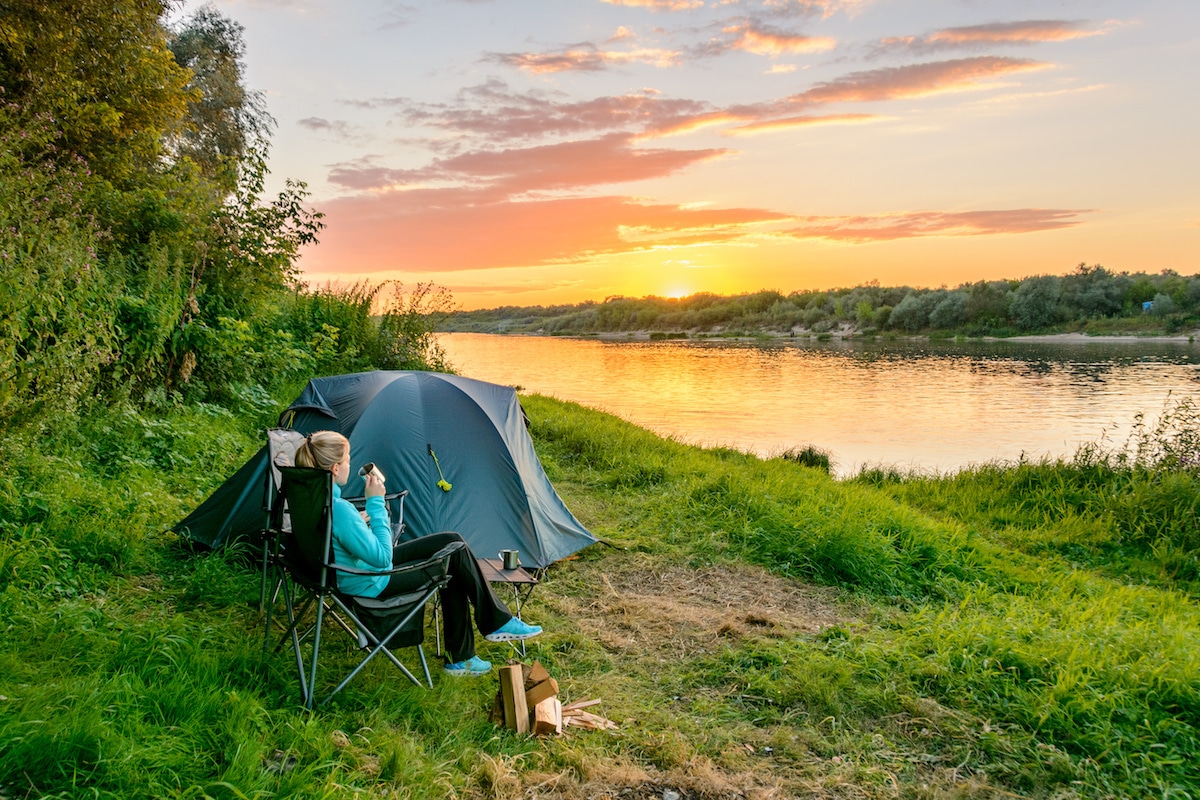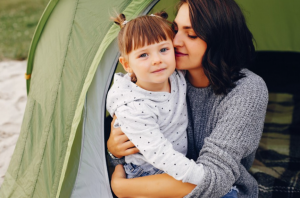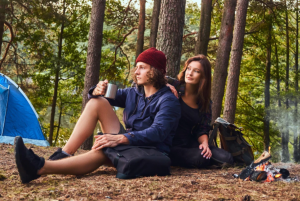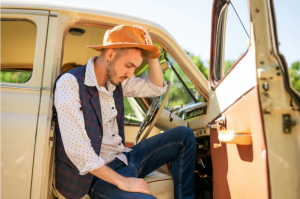When you’re out hiking or mountaineering in the wilderness, your campsite is extremely important and will play a big part in your camping experience. When you set up your campsite, you need to take a lot into consideration to make sure everything is where it should be. And if you’ve never camped before, it’s especially important to know how to set up your camp so you have the best experience possible. Here is what all campers need to know about laying out and setting up their campsite for a weekend in the woods.
What We'll Cover
What Do You Need In Your Campsite?
In order to have the best camping experience possible, you’re going to need a wide variety of different things. From sleeping bags to a cast iron skillet, there is a lot to take into consideration.
Appropriate Gear
Arguably the most important thing to bring camping is the right kind of gear. If you know it’s going to be chilly during your camping trip, bring clothes that fit the weather. Or if it’s going to rain, bring a tarp so you can cover your campsite. You also want to ensure that you have the right tools for cooking. If you know you’re going to be cooking steaks for dinner one night, you’re going to want a camping griddle or something similar to cook them on.
If you have a sensitive back, you might want to consider bringing a camping cot or an air mattress. And if you want to have somewhere to sit and eat your meals, a camping table can be an important investment for you. While some gear is necessary no matter who the camper is, other things are going to vary from person to person.
Think about everything you want to do, the weather forecast, your personal preferences, and so on, and then plan around those. If you don’t plan ahead, you’re going to end up forgetting something important, and you won’t have the right gear.
Advance Preparation
It’s important to plan your meals in advance so you know you have the right amount of food. When it comes to meals, you can also do a lot of the preparation at home to make your life easier later on and cut back on the number of camping utensils you need to bring. If you know you want to have pancakes for breakfast one day, pre-mix all the dry ingredients and put them in a plastic container, then all you need to do when you’re camping is mix in the wet ingredients—no measuring spoons or bags of flour necessary. You can also pre-marinate meats, cut up vegetables, and make seasoning blends to help with the same issues. And of course, you’ll want a camping cooler to ensure that all your perishables stay properly chilled.
When it comes to first aid, you absolutley need to makes sure you’re prepared. You can purchase pre-assembled survival kits and camping first aid kits, or you can choose to build your own. If you build your own, remember that sunburns are common while camping, so you should pack things to help with those. You’ll also want to know how to treat burns in case there is ever an accident around the campfire.
Maintaining Good Habits In Camp
While you’re camping, you should do everything in your power to abide by the Leave No Trace principles. Don’t toss your garbage on the ground, don’t take anything from nature, respect wildlife, and so on. Other good habits to maintain include:
- Practice proper fire safety
- Take off shoes before entering a tent to avoid tracking dirt in
- Know where the nearest source of water is
- Dispose of greywater properly
- Only use biodegradable soaps
- Follow local laws
- Thorougly clean all cooking supplies after using them
- Use the buddy system
- Put food in bear canisters or in a bear hang
If you do these things, you’ll help ensure that you have a good camping experience.
Elements of a Good Camping Location
A good camping location is a clear space with minimal debris and out of the way of the major roads. You want to find somewhere on higher ground, in case it rains, and shade is also important if it’s hot outside. However, remember to avoid dead trees—they can potentially drop branches and be a safety hazard.
You also want to find a campsite that’s near fresh water. Haivng access to potable water means you won’t have to bring the water yourself, which will save a lot of hassle. Just remember to purify the water if you plan on ingesting it. There are a lot of ways to filter and purify water such as using water filter straws.
Campground Layout
When setting up your campground, you’ll want to decide where everything will go. Having a designated spot for everything will help you from misplacing any gear.
Keeping Track of Gear in Camp
Everyone organizes things in different ways, and you’ll want to find a system that works for you. This can be putting similar items with one another, like placing everything related to cooking in one corner of the campsite and all the furniture somewhere else. Or, you can try organizing things by when you’ll need them. For instance, if you know you’re going swimming and eating lunch at a lake tomorrow, you might put everything you’ll need for those activities together.
The best way to not lose anything is to stay on top of what you’re doing. If you see something out of place, fix it immediately. The easiest way to lose your gear is by putting it where it doesn’t belong. If you take the time and effort to ensure that everything is in its place, you’ll have a much lower chance of misplacing things.
Keep Everything in the Same Places Every Time
When you use something, put it back where it belongs. This saves everyone the time and hassle of having to look for something you need. Everything from shoes to camping gear should have its proper place when you are at the campsite. If you keep your campfire tripod folded up next to the campfire when not in use, you should be able to find it there every time you look for it.
Bring the Right Tools
Do research before you go camping and find the best tools for what you’re planning on doing. You can also try talking to other campers and see what their recommendations are. Tools like hatchet and hiking compasses are invaluable when you’re camping, so you definitely won’t want to skip those.
You should bring tools that you are comfortable using, and if you don’t know how to use a tool, you should practice with it before leaving home. Having a compass can save your life if you get lost, but only if you know how to read it.
Lighting the Campground
When the sun goes down, you don’t have to stop having fun. A properly lit campsite is safer and more fun for everyone involved. Everyone should at least have their own personal camping lantern or flashlight. Headlamps will also be a good tool for you to use when you are out camping. These are lightweight and provide hands-free lighting when you are cooking or walking.
You may want to use solar-powered stake lights around the campsite. During the day, they will absorb the light of the sun, and at night, they will automatically light up and provide a lighted pathway for you to use. A solar camping lantern can also be a good choice. Of course, your campfire will also provide lighting and warmth at night—just remember that a campfire is a lot more dangerous than other light sources.
Laying Everything Out
Have a plan before you go camping to get the best possible outcome. Think about how you will lay out your supplies, and have a system in place before you go. Proper planning will help you to be able to spend more time enjoying your camping trip. You will effectively be carrying your home with you, so you will need to slow down and take time to organize before you get to the campsite.
Selecting the Site
Selecting your site uses a variety of factors that are totally up to you. You may want to pick a site because it’s close to your friend’s site, or you may also want a site that is far away from everyone else for privacy and getting some peace and quiet. The most important things to look for in a campsite are being close to a water source and not being near dead trees. When you choose your campsite, remember not to disturb any plantlife that is already there. Try to find a site that has already had some use so you know you aren’t harming the environment.
Proper Campfire Setup
No campsite is complete without a proper campfire, and in order to have a proper campfire, you need to know how to build one. If the campsite already has a place where previous campers have put their fire, you should use that. If you need to find a new space, make sure it’s completely free of anything flammable and place rocks around the circumfrence. For fuel, you can either bring your own or harvest firewood.
Supervise the campfire at all time, and never leave it unattended. To avoid losing control, make sure it stays a manageable size. Campfire safety is important, and you and everyone you’re camping with needs to be familiar with how to behave around an open fire.
If you can’t hav a campfire due to the season or local ordinances, consider bringing a camping heater for warmth.
Disposal Setup
One of the first things you’ll want to do when arriving at your campsite is deciding where your disposal site will be. For bodily waste, you want to find a space at least 200 feet from a water source and your camp. It’s also important not to go in the exact same spot every time. Try to space out the waste if you can.
For normal trash, you should have a designated place to put it. This could be something like a collapsible trash can, or everyone could have their own personal trash bags. When throwing away food waste, make sure it’s in an air-tight container so you don’t attract animals to the campsite—the last thing you want is to wake up in the morning to a hungry bear.
Tent and Food Setup
While it can be tempting to put all your food things next to the fire, this may not be a good idea. The heat of the fire can warm your camping cooler faster and cause the food to perish. Place your cooler in the shade away from the fire, and put everything else with it. When it’s time to cook, you can set up your camping kitchen.
Where you place your tent is up to your personal preference, but there are still a few things to keep in mind. For instance, you should try to put your tent in a spot where trees or other natural formations break the wind. Flat, even ground will also make it easier to sleep in your tent, so try to avoid anywhere that has a lot of rocks. You should try to put your tent in a place that’s clear of supplies that could make getting in and out difficult.
Conclusion
Your campsite is one of the most important parts of your camping experience, so you need to know what to bring and how to set it up. Following these tips are a great place to start, and as you get used to going on more camping trips, you’ll come up with your own tips and tricks that work for you. Remember, the most important part of camping is having fun!
The responses below are not provided, commissioned, reviewed, approved, or otherwise endorsed by any financial entity or advertiser. It is not the advertiser’s responsibility to ensure all posts and/or questions are answered.


![Tips to Go Camping With a Toddler [Different Weather]](/assets/images/375a17532f44c72a41d33b1008823cf3.png)


